The founder & CEO of Emmis Communications is convinced that the future of radio depends on finding a way to people’s smartphones and connected cars.
Emmis Communications is pushing a smartphone app that unites FM broadcasting and digital media, with a potential to both change radio’s ratings measurement, and be heard in connected cars and on mobile phones. Time for a good talk with media entrepreneur Jeff Smulyan, also about following your dreams and living them big, thanks to a positive mindset and pure passion: “If you love what you do, the bad isn’t so bad, and the good is pretty terrific”.
“I saw the Rolling Stones at 7 o’clock in the morning”
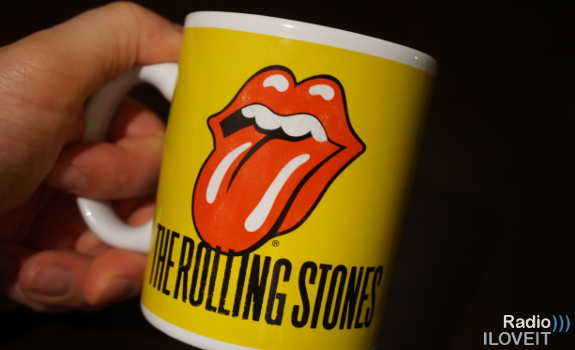
Jeff Smulyan recalls a memorable music night from his adolescent years (image: Thomas Giger)
Serve your local market
Before you bought your first station, how did you get involved in radio in the first place?
“It was always my first love to be in the radio business. It’s the most creative form of media, as you can create anything; 24 hours a day, 7 days a week. It’s a local medium; you can relate to people and their communities, and a very personal medium. I went to law school to study broadcast law, and I wrote my law review article on the Federal Communications Commission.”
Develop your business talent
Many people who love radio, think: ‘I’m gonna’ work at a radio station, or for a radio company’. What made you think: ‘I’m gonna’ start my own radio station’?
“I had always thought: that’s what I wanted to do. I went to the University of Southern California to get a master’s in Telecom, and to study how to be a broadcast entrepreneur.” After working at ABC in Los Angeles and gaining some experience in running a small broadcast facility, Smulyan found investors and bought his first station in 1979 (which he still owns today). More stations followed soon. “It’s been up and down, but it’s been a lot of fun.” Investments of Emmis (which is the Hebrew word for ‘truth’) included broadcast facilities in Argentina and Europe. One of the most successful projects was Sláger Rádió, launched in 1998, and Hungary’s number 1 commercial radio network for years. In 2009, the government didn’t renew their license. “It was a very painful experience, because we loved the station.”
Enjoy your journey foremost
You’ve launched several formats, such as WFAN [now owned by CBS], which is said to be the world’s first Sports Radio. Has it been a drive for you to go where no one else has gone before?
“Yes, it’s always about finding the right niche; the right format in the marketplace, and have some fun doing it.” Among his favourite formats, as a listener, are News, Sports and Classic Rock. In response, I’m holding my Stones coffee mug in front of the Skype camera. That’s when he gets excited and says: “I’m probably the only person you’ve ever met who saw the Rolling Stones at 7 o’clock in the morning! When I was in law school, they played at The Forum in Los Angeles. There was a hockey game during the day, and they couldn’t get the ice cleared off. The 7 o’clock show didn’t start till midnight, and the 11 o’clock show started at 5 in the morning. We got outta’ there at 8.30 in the morning. A memorable night…”
“Bringing this currency to radio ratings”
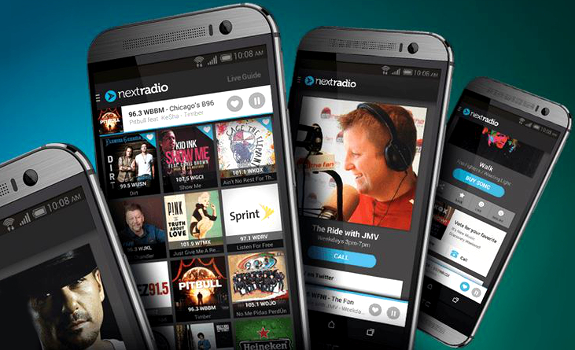
Smulyan sees NextRadio as part of an improved ratings system (image: Emmis Communications)
Claim your listener’s cell
There seems to be a challenge in some markets to reach young audiences, because they’re on their phone all the time, so TSL is going down. How to go about that?
“In the United States, we used to sell probably 40 million Walkmen a year. But today, the ‘only’ device people carry is their smartphone. We know they look at it over a hundred times a day.” Emmis is looking for ways to bring radio to people’s smartphones. Its NextRadio smartphone app with TagStation data service, freely available in the Google Play Store and developed with support from the NAB of which Jeff Smulyan has been a director, allows people with FM-friendly phones to receive local radio, enriched with metadata and visuals, while avoiding data & battery usage that would come with streaming. The app has also been rolled out in Canada, Mexico, Columbia and Peru.
Build your strategic partnerships
I’ve got an iPhone, from the company that doesn’t like FM chips in smartphones…
“Yeah, Apple is the last holdout. We’re in every other phone, but not on the iPhone — but we’re working on it. We’re very excited. In the United States, we’re on every carrier now, and also in just about everybody’s phone; Samsung, LG, HTC, BLU, Alcatel… so we’re making good progress.”
How big is the platform right now? How many downloads do you’ve got so far?
“We have about eleven million downloads. Last year, we’ve added AT&T, T-Mobile, Verizon and U.S. Cellular, so 2017 is the year we really start to ramp up. Following the growth in smartphones is a very, very big part of our future.”
What about the ‘connected car’?
“NextRadio will be adapted into the car of the future — absolutely, positively. When we built NextRadio, automakers came to us at the very beginning and said: taking the over-the-air signal, and adding the interactivity of NextRadio is the future of radio, in the car of the future.”
Leverage your data treasure
The app provides a lot of user data — like when & where people tune in or out. Could this be the new PPM?
“Absolutely. And yes, we’ve had discussions with ratings companies. Those talks are ongoing.”
And how are they going for you?
“Going well. Because every second of listening is recorded, and we had the ability in early stages to reach many more people than Nielsen does. We’re in discussion with them and others about bringing this currency to radio ratings.”
“We can do a lot of things in our digital transmission”
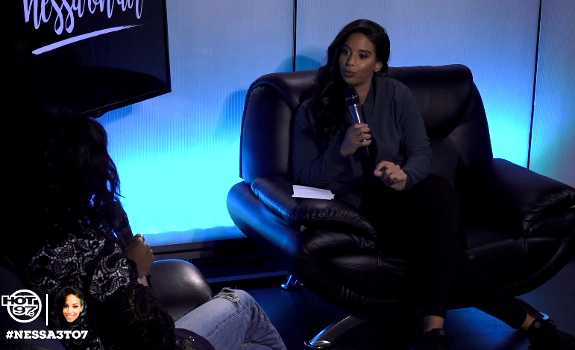
Enhancing radio with visual & social content can attract new listeners (image: YouTube / Hot 97)
Make your ads sexy
How do you work on reaching young audiences in terms of content?
“Well, we have our HipHop stations; we have our Top 40 stations. I think you really just have to understand the listener’s taste in any given radio market. It is challenging… Young people have so many choices, and our biggest challenge is: we have commercials. So we have to figure out a way to make the commercials more interesting and more powerable. But we’re still the free and universally distributed medium.” Emmis is exploring additional revenue sources: “We do a lot with our digital platforms, and various forms of concerts & events.” Regarding the overall state of the US radio industry, he feels like “there’s been an awful lot of consolidation and standardisation; taking product away from local markets and inserting it from other markets. Every company runs it differently. We’re local and live in every market we’re in.”
Monetise your massive audience
There are positive sounds from iHeartMedia, so it seems like things are looking a little bit better already.
“I think they’re better. Obviously, iHeart and Cumulus have very large debt challenges, and they’re going to have to work through that. Hopefully they will, and be more stable. That will help all of us.”
I felt like the NAB Radio Show 2016 was positive. I spoke with many young talents who are finding their way into radio, and they have bright expectations about the future.
“We reach 93% of the population every week. Nobody reaches more people every week than American radio”, Jeff Smulyan states, adding that all over the world, radio manages to reach a great part of the population. “There’s new technology, such as streaming, satellite, and everything, but at the end of the day, this is a very strong, vibrant industry.”
Visualise your radio content
What do you think about the visual component of radio that’s getting bigger and bigger?
“We can do a lot of things in our digital transmission. I think Hot 97 in New York has about a million viewers a month on its YouTube channel. We can have artists come into the studio, or do all sorts of events, and put it up there. We can create compelling content in a video environment as well.”
What makes really great radio for you?
“People. People who love what they do. People who love what they do, and care about their audiences.”
“It’s been a long journey, but it’s been fun every day”
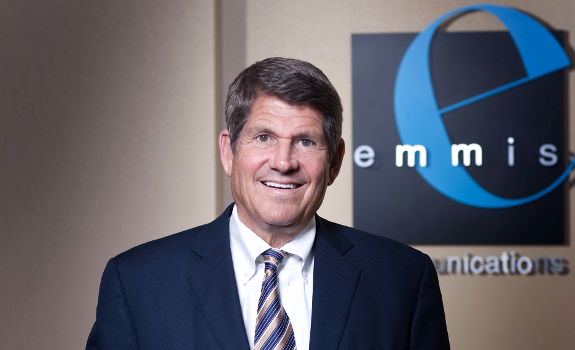
Smulyan appreciates many positive moments during his career (image: Emmis Communications)
Believe your desire’s manifestation
What I like about the Eleven Commandments on your website, is the positive mindset.
“Actually, I wrote ten of them, for a manager’s meeting — probably over 30 years ago. When we were in Major League Baseball in the United States [Smulyan owned the Seattle Mariners, TG] and we saw the team, we said: we should add the eleventh: admit your mistakes.”
Hahaha. The one that resonates with me most is: ‘Believe in yourself – if you think you can make it happen, you will’. I’m a fan of mindset books, so it reminds me of Napoleon Hill and his work.
“I used to think statements like that were trite: ‘If you believe you can, you can; if you believe you can’t, you can’t’. But the older I get, the more I understand that if you believe in something, you can make something happen.”
Henry Ford said that, right? ‘If you believe you can, or you believe you can’t — either way, you’re right.’
“That’s right — exactly right.”
Find your own way
What moments in your radio career have really proven this statememt to be true for you?
“WFAN. Everybody thought it was a crazy idea. Nobody ever thought about All-Sports in radio, and now there are 600 stations like that in the United States.” He mentions Power 106 in Los Angeles, “the world’s first HipHop station”, as another example of successfully practicing a philosophy of following your dreams and believing in yourself.
Did formats like these come from research, finding that people love to hear Sports talk or HipHop music, while there’s not enough of that on the radio? Or was it just inspiration that you followed?
“A lot of times, it just comes down to your instinct. When we did the HipHop station, we did some research were we saw certain things in Southern California, but whenever you do something that nobody’s ever done, it’s impossible to really research it. Sometimes you just have an idea, and try it.”
Follow your highest excitement
Are there any things that are still on your bucket list?
“Nah, not really. Just create an enduring company; an environment where people can have fun, take care of their families, and serve their communities. I’ve never been somebody who says: this year, I have to do X, and next year, I have to do Y. It’s just: build the enterprise, try to have fun, and try to be successful.”
19 FM stations and 4 AM stations is a very nice portfolio, but haven’t you ever had the dream: I wanna’ be as big as Cumulus or iHeart?
“Yeah, at different times. But, you know, I’m getting older [laughs], and I’m pretty content with my life. Emmis has been a dream come true, so I have no complaints.”
You’ve come a long way since ’79.
“It’s been a long journey, but it’s been fun every day. I speak a lot to college kids, and I always say: when you’re in college, you look at your career and go: it’s just gonna’ be straight up; it’s gonna’ be great, but when you actually have your career, it’s a rollercoaster. Some days are good; some days are bad — the economy changes, or your ratings drop — but if you love what you do, the bad isn’t so bad, and the good is pretty terrific.”
Video: how NextRadio and TagStation can provide digital audience data of analog radio usage through Dial Report
Header images: Emmis Communications

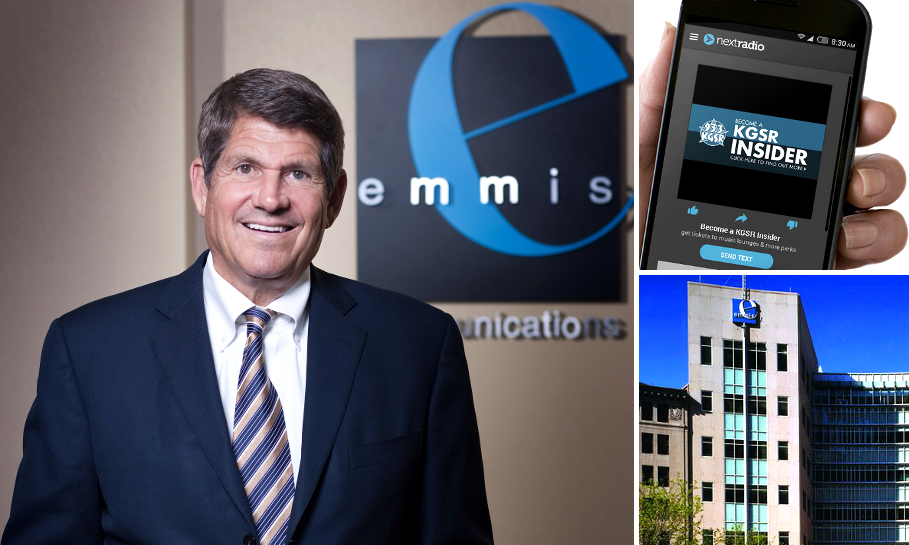




Hi Thandanani,
Great that the article has inspired you, and thanks for your kind reply!
I’ve forwarded it to Jeff, along with your email address, so he has the possibility to contact you.
Very best,
Thomas
Hello, I live in Swaziland, Southern Africa. Very passionate about radio, and what Jeff Smulyan has managed to achieve. How do get in contact with him?